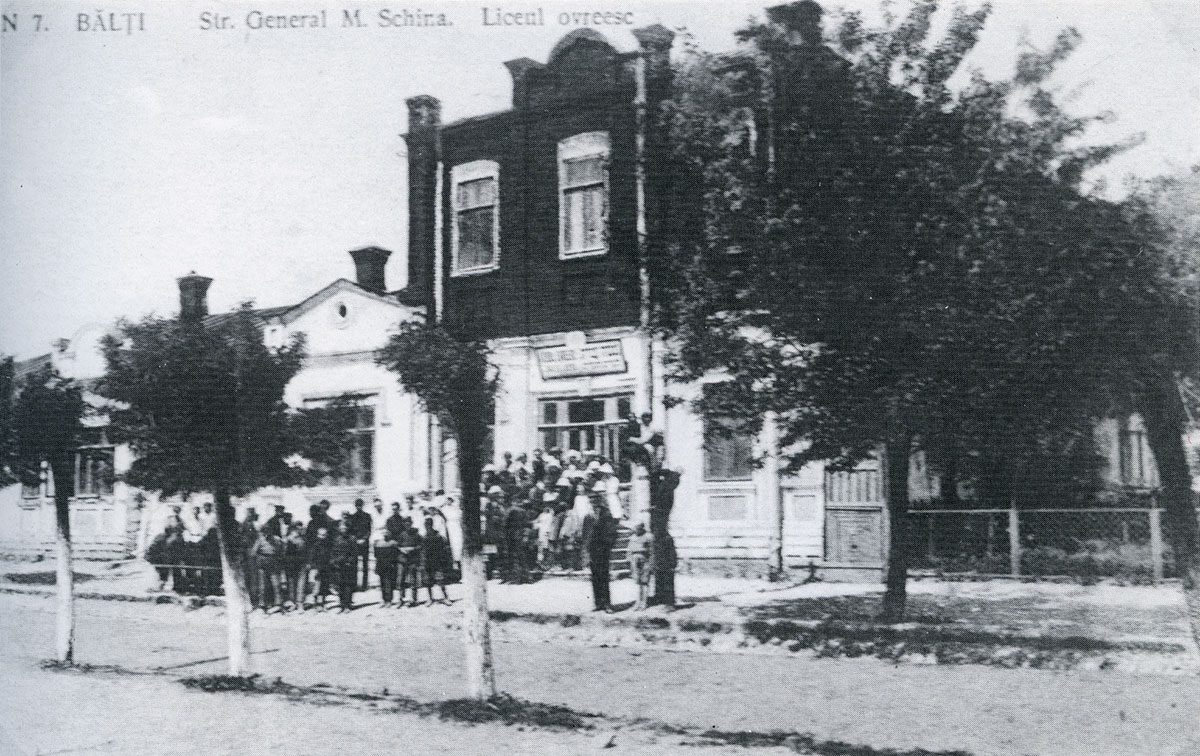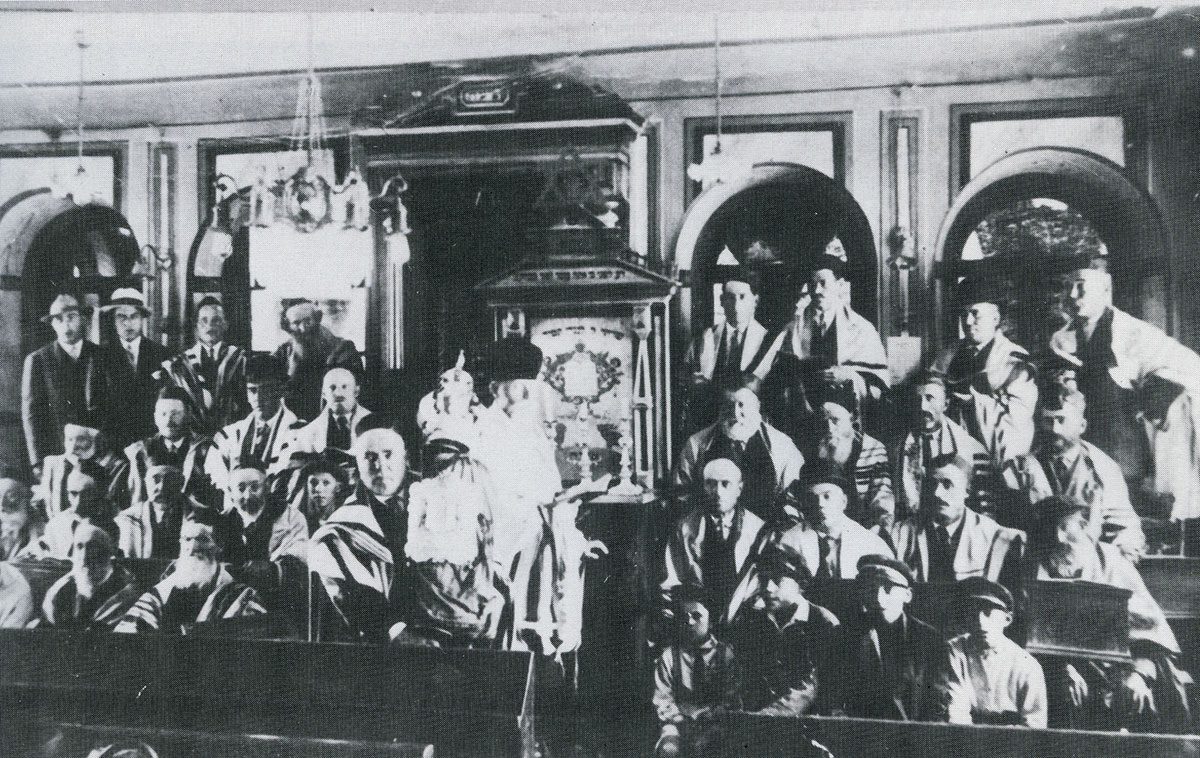Moldova_ Balti city
Balti city
Balti is the second largest city in the Republic of Moldova and with one of the most engaging and bright Jewish history. It is located in the north of the country, at the intersection of the Reut River and its tributary, the Reucel River.
Unofficially, Balti is called the northern capital of Moldova. The population is about 150 thousand people. The name of the city is translated as a swamp due to the area around. Balti was established in 1421. Several times, it was almost completely destroyed. At the end of the 15th century, the settlement was completely burned down by Turkish troops. In the 17th century it was burned by Polish troops, and at the beginning of the 18th century by Tatars and Russians. But thanks to the strategically important and convenient position, the settlement is being revived and receives the status of a town. In 1818, Balti already received the status of a city and became the center of the Iasi district of Bessarabia.
In 1897, a railway was built, and in the period between the world wars, an airport. From 1941 to 1944, during the war, Balti was destroyed by 80%. After the war, the city is restored, it becomes a regional center. In 1994 it was given the status of a municipality.
Balti in detail
The Jewish community of Balti has always been characterized by its hospitality. From the 18th century until the Holocaust, between 60 and 70% of the population were Jews. This gave rise to many local traditions and legends. All Balti Jews, referring to the stories of their grandfathers and family traditions, say that the settlement was established by a Jew who opened a caravanserai at the crossroads, where the Reutsel flows into the Reut. In 1740, the first Lithuanian style synagogue was built in Balti. In 1779, Jewish merchants came to the city at the invitation of the Turkish pasha. By 1782, a Jewish community was formed. It is inhabited by both Sephardim and Ashkenazi Jews. Many synagogues and prayer houses are being built. According to the 1897 census, more than 18 thousand people live in Balti, of which more than 10 thousand are Jews. In the 19th century, there was one synagogue and 12 prayer houses in Balti. By 1939, the number of synagogues had grown to 37. Most of them were named according to the craft of the parishioners. Every synagogue had a Cheder. Talmud Torah for 160 students was also opened in Balti. There were two Jewish libraries, four matzoth bakeries, two workshops for the restoration and repair of religious accessories. In 1904, a Jewish hospital was opened. By 1940, in Balti, out of 53 thousand people, about 37 thousand were Jews.
In 1941, Balti airport became military. It was bombed starting from June 22, 1941. The main air battles were over the city, as there was a fight for the airport. As a result, the city was almost completely destroyed. Trying to escape the bombings and fires, the Jews hid in the Jewish agricultural colony Valea lui Vlad. But this place was attacked by a local gang. 35 people were killed, 140 houses were burned, and the entire Jewish population was robbed. The gang was marked by such atrocities and robberies that even the Romanians refused to accept them into their army as volunteers. Similar pogroms and atrocities with the participation of the local population took place in many settlements in the north of Moldova. The Jews decided to return to the burning and destroyed city. On July 9, Romanian and German troops entered Balti. Air battles continued for another five days. The Jews were accused of signaling Soviet planes with rockets. After that, 400 Jews were shot. Later Balti was visited by Ion Antonescu, who declared that the Jews should rebuild the city. Himmler also visited Balti and Heydrich flew here on his plane. In the end, they decided to evict the Jews from the city and establish three ghettos nearby: in Rascani, Limbenii Noi and Reutsel. 450 Jews remained in Balti. In 1942, Ion Antonescu, having learned that there were still Jews in the city, demanded that they be immediately sent to Transnistria or destroyed. Mass executions of Jews were carried out by the Romanian gendarmes and Einsatzkommando 11 “a”. Only five Jews survived the Holocaust in the city.
After the war, Balti began to recover. Jews are returning. From 1946 to 1956, there was one synagogue and a matzoth bakery. In 1956, indignant workers demanded the closure of the synagogue in a local newspaper article under the pretext of matzah speculation. The synagogue was closed. But the Jews continued to gather and even secretly bake matzah. Until 1989, despite police raids and a fire, the underground synagogue continued to operate. In 1989, the building was purchased and a synagogue was opened, which is still in operation (the last restoration took place in 2022).
By 1989, about nine thousand Jews lived in Balti. One of the districts of the city even received the unofficial name of Tel Aviv. In the 90s of the last century, the Jewish organizations of Balti began to restore their work. The Jewish community was organized. A monument to the victims of Nazism was opened. There is a Jewish cemetery.
There are no Jewish schools, restaurants or cafes in Balti. The city’s museum does not have a section on the Jewish history. There are no kosher food outlets.
About 2,000 Jews and members of their families live in Balti and the northern region of the country. Welfare, cultural and educational programs are supported by the Joint and Agudath Israel in Moldova,. At present, main structures are located in the building of the Hesed Yakov Center.
The official opening of the building for the welfare service took place in 1998. It provided assistance to elderly Jews in Balti. In the local Hesed, for the first time in Moldova, a special service was created: “Hesed on wheels” to provide assistance in about 50 settlements of the North of Moldova to the elderly and needy.



